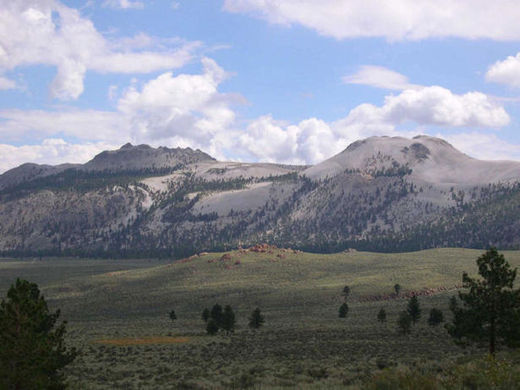
Could it happen in our lifetime? Not likely, scientists say. But it could take a lot less time than previously suspected.
New evidence suggests that the lifespan of giant magma pools - which erupt through supervolcanoes - can last between 500 and 3,000 years. Previous evidence had suggested these pools lasted around 100,000 to 200,000 years before becoming super eruptions.
Supervolcanoes are said to be roughly 100 times the size of active volcanoes, spewing out more than 450 cubic kilometres of magma - enough to fill Sydney Harbour 900 times over. They lead to widespread destruction and climate change.
"Everybody now is familiar with the atmospheric effects of the eruptions of the Iceland events," says Guilherme Gualda, assistant professor of earth and environmental sciences at Nashville's Vanderbilt University, referring to the 2010 eruption of Iceland's Eyjafjallajokull volcano that caused air traffic nightmares and environmental concerns.
"You can imagine that multiplied by 100 and 1,000 and the effects become global in scale, rather than local or continental."
Super Eruptions
The last super eruption happened 27,000 years ago in New Zealand. The long-term average is about one every 100,000 years, estimates Gualda, the lead author on the study.
"These are really large events that are much, much larger than anything we know from active volcanoes. These are things we only know from the geological records."
To determine how long giant magma pools last before they erupt, Gualda and his team studied quartz crystal and rock formations at Bishop Tuff, in Long Valley, Calif., where a super eruption occurred 760,000 years ago.
Evidence suggests the magma pool at Bishop didn't include crystals when it first formed below the Earth's surface, so Gualda and his team measured how long it took for the quartz crystals to develop. Their study, published in the May edition of the journal Public Library of Science ONE, used that to determine that magma bodies "evolve on millennial time scale," instead of hundreds of millennia.
"In this type of eruption, when, for some reason, magma starts to rise towards the surface, bubbles form and grow, making the magma less dense (and) making it move faster towards the surface," Gualda says. This causes more bubbles to form and grow, making the magma even denser resulting in the magma being propelled to the surface to cause the eruption.
He suspects past scientists were off in their calculations because they based them on the radiometric dating of zircon crystals, which are also found in volcanic rocks.
"Zircon is very resistant, so once formed, it is not easily destroyed," Gualda says.
"The idea is that to form a giant magma pool, it takes some time, and the pool of magma grows and shrinks over time. At some point, the conditions are right and a giant magma pool can be established.
"Zircon is recording the time scales it takes to get to that point. Quartz records the time it takes between the inception of the giant pool and eruption itself."
Yellowstone
Gualda says there are no supervolcanoes erupting anytime soon - "We don't know of any magma bodies big enough right now to produce such an eruption."
But he hopes his study will lead to more research about how they evolve.
Possible locations for future supervolcanoes include New Zealand, Argentina's Andes region and Indonesia.
The most likely place in North America is Yellowstone National Park, which has the world's largest collection of geysers (erupting hot springs), Gualda says.
Yellowstone has a history of three major eruptions - two of which were technically super eruptions, he says.
"We don't know where it is going," Gualda says. "It could be that it's sort of dying out. It could be that it's just in an in between phase. But it's possible, computable that it would have yet another super eruption."



Reader Comments